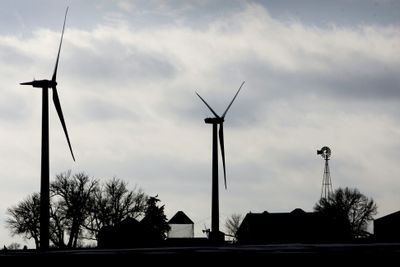Wind power may not be so abundant, study warns

WASHINGTON – The wind, a favorite power source of the green energy movement, seems to be dying down across the United States. And the cause, ironically, may be global warming – the very problem wind power seeks to address.
The idea that winds may be slowing is still a speculative one, and scientists disagree whether that is happening. But a first-of-its-kind study suggests that average and peak wind speeds have been noticeably slowing since 1973, especially in the Midwest and the East.
“It’s a very large effect,” said study co-author Eugene Takle, a professor of atmospheric science at Iowa State University. In some places in the Midwest, the trend shows a 10 percent drop or more over a decade. That adds up when the average wind speed in the region is about 10 to 12 miles per hour.
There’s been a jump in the number of low or no wind days in the Midwest, said the study’s lead author, Sara Pryor, an atmospheric scientist at Indiana University.
Wind measurements plotted out on U.S. maps by Pryor show wind speeds falling mostly along and east of the Mississippi River. Some areas that are banking on wind power, such as west Texas and parts of the northern Plains, do not show winds slowing nearly as much. Yet, states such as Ohio, Indiana, Michigan, Illinois, Kansas, Virginia, Louisiana, Georgia, northern Maine and western Montana show some of the biggest drops in wind speeds.
Still, the study, which will be published in August in the peer-reviewed Journal of Geophysical Research, is preliminary. There are enough questions that even the authors say it’s too early to know if this is a real trend or not. But it raises a new side effect of global warming that hasn’t been looked into before.
The ambiguity of the results is due to changes in wind-measuring instruments over the years, according to Pryor. And while actual measurements found diminished winds, some climate computer models – which are not direct observations – did not, she said.
Jeff Freedman, an atmospheric scientist with AWS Truewind, an Albany, N.Y., renewable energy consulting firm, has studied the same topic but hasn’t published in a scientific journal yet. He said his research has found no definitive trend of reduced surface wind speed.
Several outside experts mostly agree that there are signs that wind speed is decreasing and that global warming is the likely culprit.
A naysayer is Gavin Schmidt, a NASA climate scientist in New York who said the results conflict with climate models that show no effect from global warming. He also doubts that any decline in the winds that might be occurring has much of an effect on wind power.